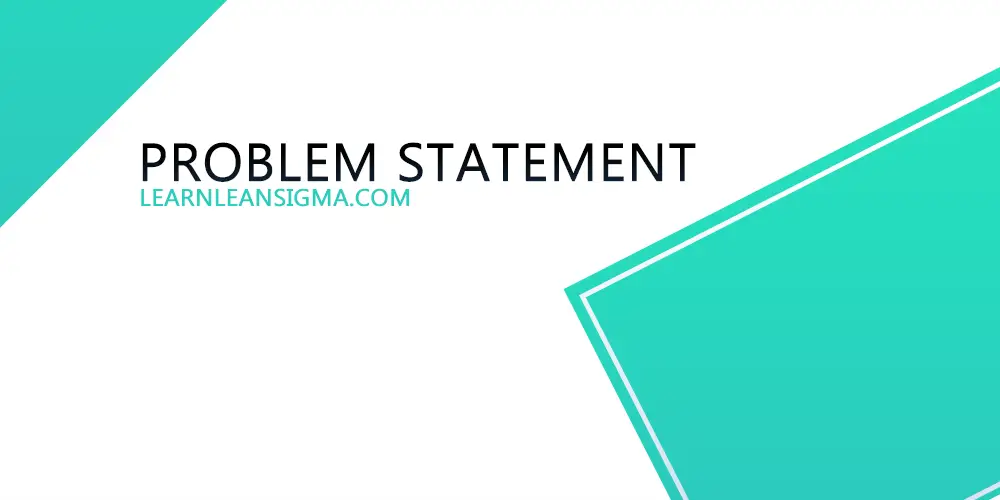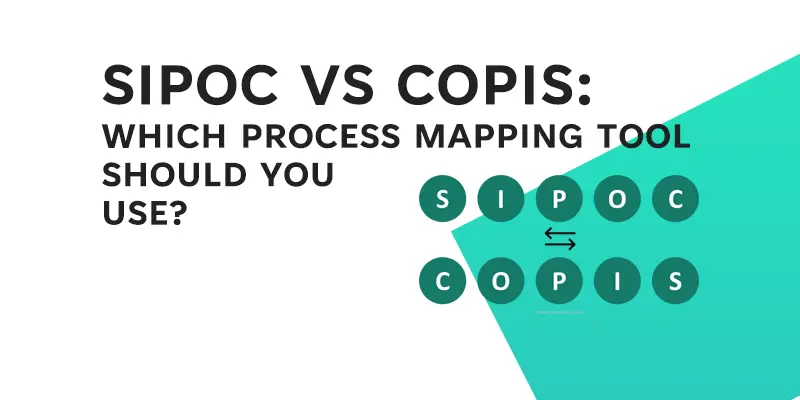Problem Definition: To quote the great Albert Einstein, “If I were given one hour to save the planet, I would spend 59 minutes defining the problem.” This sentiment may appear extreme, but it emphasizes the critical importance of precisely and clearly defining problems. Organizations use continuous improvement projects to implement meaningful change and streamline operations. Several factors contribute to the success of such projects, but it all starts with a thorough understanding of the problem at hand. A strong, well-articulated problem statement is the foundation of any successful process improvement project, laying the groundwork for effective solutions and measurable results.
This article will explain everything you need to know about why we need to write good problem statements and how to effectively define a problem using tools and techniques to support problem exploration.
Table of Contents
What is a problem statement?
An effective problem statement can be summed up in a concise statement, which is one or two sentences that describe the problem or issue that the project is seeking to address.
It is vital the problem statement is correct as it is used as a communication tool to ensure everyone who is working on the project is clear about the problem they need to address and why the project is important. This also supports stakeholder buy-in to support the improvement and if used to get the project sponsor to sign off for resources that are needed for the project.
Why do we need to define the problem?
A clear and concise problem statement will ensure project team focus and prevent the project from focusing on different problems that are not in the scope of this project. When working through the project at each stage the project lead should check the discussions and the actions being taken to resolve the problem match the problem in the problem statement? If not you may have drifted out of the scope of the project and need to bring the focus back to the problem.
It’s not enough to say, “We have a problem,” when writing a problem statement. Instead, it’s about defining the problem, who it affects, and the impact it has on your organization or process. The more specific you are, the easier it will be for your team to find solutions.
A well-crafted problem statement can also be an effective tool for gaining stakeholder support. Assume you’re a captain persuading your crew to embark on a dangerous but necessary journey. You’re more likely to get the support and resources you need to address the problem if you can clearly articulate why the journey is necessary.
What makes a good problem statement?
So now you should understand what a problem statement is and why it’s important, it’s time to explore what the key elements are to consider when creating a good problem statement.
The problem statement should:
- Outline the negative points of the current situation.
- Explain why the problem matters
- Be used as a communication tool to get buy-in and support from others.
- Present the problem in a way that is clear and precise.
- Not suggest a solution
How to define a problem
A good problem statement can be written by answering specific questions that relate to the problem. The technique commonly used to support writing a problem statement is known as 5W1H. Which relates to the Who, What, Where, When, Why and How of the problem.
Using questions such as:

- What is the problem?
- Why is it a problem?
- Where does a problem occur? (Geographically in the process)
- Who is impacted? (Defines if its an internal or external issue)
- When did the problem occur? (Chronically or Sporadically in nature?)
- How does it impact the business?
It can be taken a step further by adding an Is/Is Not technique to it, therefore asking “Where does the problem occur?” and “Where does the problem not occur” for example using the example layout shown.
Once you have developed the 5W1H of your problem by answering the questions above, the next step is to condense the answers to these questions into a concise statement that is 1 or two sentences long.
Problem Statement Example
“Our assembly line has experienced a 20% decline in productivity over the past three months, leading to a revenue loss of $200,000 and customer dissatisfaction due to shipping delays.”
This statement is clear, specific, and actionable. It identifies the problem, quantifies it, outlines who it affects, and states the consequences. This way, everyone involved knows exactly what needs to be fixed and why it’s crucial to act now.
Avoid making these mistakes in problem definition
There are some common pitfalls that are made when problems are being defined and it is important to avoid these as they can prevent the problem statement from being effective at identifying the true root cause of the problem.
Mistakes to avoid include:
- Symptoms associated with the problem create confusion when trying to describe a problem
- Causes must be avoided when describing a problem. Root cause investigation should be done later
- Solutions are often an early consideration when wrestling with a problem. It is essential to avoid jumping to solutions
- Blame is also a natural reflex when one is afflicted with a problem.
Conclusion
In conclusion, problem statements are a vital first step in completing a successful project as the statement makes it clear to the team what the problem is that needs to be addressed to ensure the focus is on the correct problem. The problem statement also supports stakeholder buy-in to addressing the problem as supports sponsor sign-off for the project.
5W1H is a useful technique to support creating an effective problem statement and can be used to ensure the correct questions are asked when trying to understand the problem and write a problem statement.
References
Dery, D., 2000. Agenda setting and problem definition. Policy studies, 21(1), pp.37-47.
Downey, G., 2005. Are engineers losing control of technology?: From ‘problem solving’to ‘problem definition and solution’in engineering education. Chemical Engineering Research and Design, 83(6), pp.583-595.








